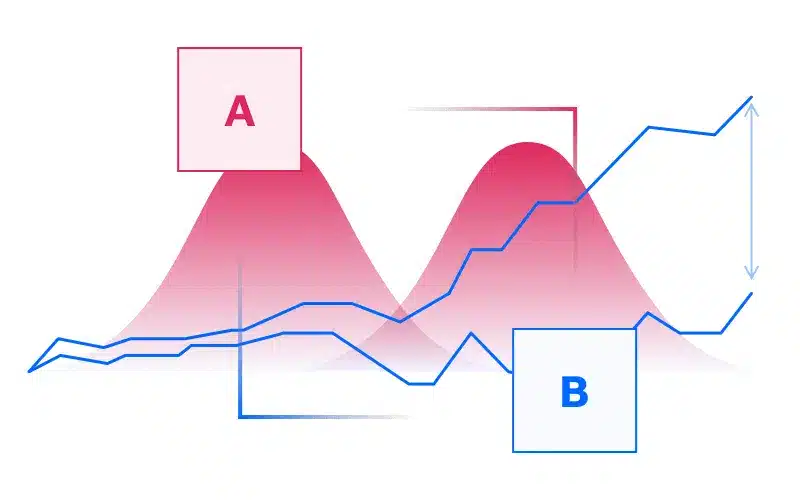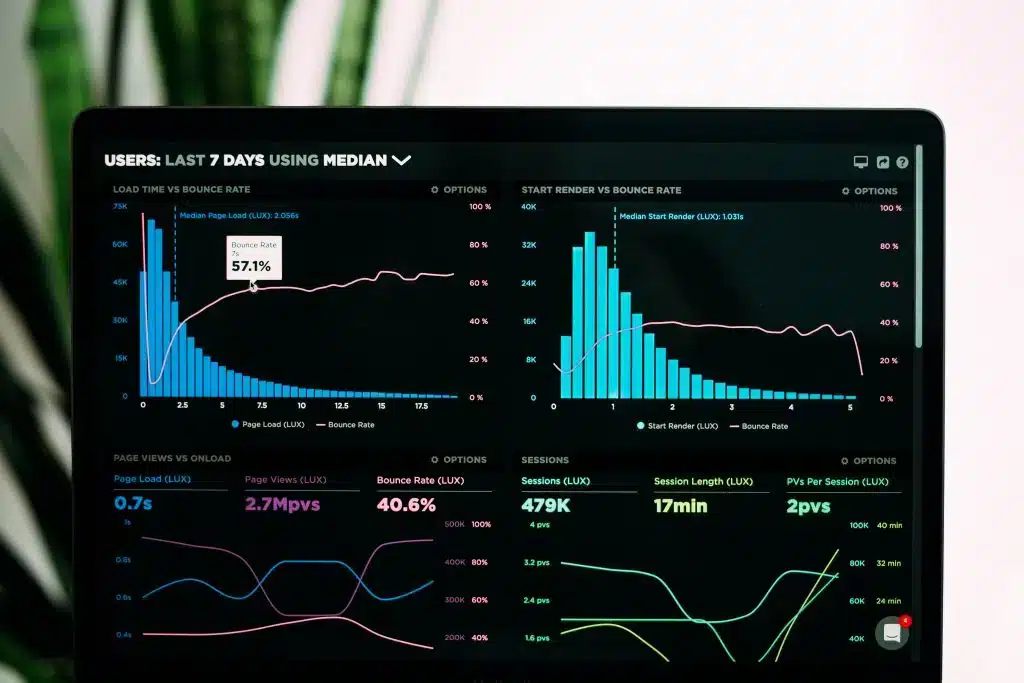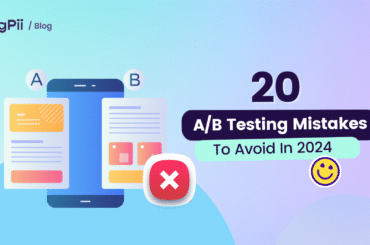A/B testing is a powerful tool for understanding how different variations of a website or product will perform with users. It allows you to compare two versions of a page, feature or product to see which one performs better.
However, once you’ve run an A/B test, it’s important to analyze the results to make informed decisions about what changes to make. The process of analyzing A/B testing results can be daunting for beginners, but with the right approach and tools, it can be easy to understand.
In this article, we’ll walk you through the basics of A/B testing analysis, including calculating the significance levels, interpreting the results, and the next steps.
Whether you’re new to A/B testing or simply looking to refresh your knowledge, this beginner’s guide will help you make the most of your A/B testing efforts.
A/B Testing Analysis: What Is It?
A/B testing analysis is the process of using statistical methods to evaluate the data collected from an A/B test to determine the most effective version of a website, web page, or even a marketing campaign.
Split testing analysis involves comparing key performance indicators (KPIs), such as conversion rate, engagement rate, and website traffic, between two or more versions of a website, email campaign, ads campaign, or app, and using statistical tests to determine which version had a statistically significant impact on the desired outcome.
It is important to choose the appropriate statistical test based on the type of data being analyzed and the specific research question being addressed. Factors such as sample size and statistical power should be considered to ensure the accuracy and reliability of the results.
A thorough and well-conducted A/B testing analysis can provide valuable insights for product development and marketing campaigns.
Importance of A/B Testing Analysis
-
To Determine The Effectiveness of The Change
By analyzing the results of your A/B test, you can determine whether the change you made had the desired effect on your metric of choice. Changes can be in the form of altering page elements like call to action, images, buttons, or content.
-
To identify the most successful variation.
By comparing test performances of the different variations, you can quickly identify the elements or changes that positively impact your key metrics, such as conversion rates, bounce rates, click-through rates, etc.
-
To understand the reasons for the result.
Analyzing the results of your A/B test can help you understand why certain variations performed better or worse, which can inform future testing and optimization efforts.
-
To make informed decisions.
One of the reasons rather than benefits of analyzing A/B tests is to understand why and how your customers respond to the different variations of your website—understanding the why behind customer behavior will help you make informed decisions that will benefit your customers and business.
Additionally, by analyzing the results of your A/B test, you can make informed decisions about whether to implement the change, continue testing, or try a different approach.
Calculating the statistical significance
When a test is concluded and the results have been analyzed, you need to confidently say whether you’ll get the same results if the tests are repeated.
Statistical significance helps determine whether the relationship or difference between two or more variables, in the case of a/b testing, your control version, and the other variations, results from chance or specific changes you made.
That is, the results or changes during testing were not due to chance or randomness but to changes implemented in the different variations.
Statistically significant results have a confidence interval of 90%- 95%. This means your test results have a 10%- 5% chance of being wrong.
The success or failure of your A/B test relies on the statistical significance level. In A/B testing, the datasets used are often the conversion rates and the amount of traffic.
Statistical significance is vital in a/b tests because it helps you to understand that the changes you’ve implemented during tests are positively or negatively related to various metrics, such as conversion rate.
When calculating the significance level, two important factors to consider are the sample size (the amount of traffic) allocated to each variation and its conversion rates.
Interpreting and Analyzing A/B Test Results
Interpreting A/B testing results is one of the most critical stages of an experiment. By interpreting the results, you can come to a reliable conclusion on the validity of the results.
By now, you should have a winning variation that performed better than the other variations during testing. However, before you go ahead and implement this variation, here are some other essential factors to consider when interpreting results.
-
Sample Size
Sometimes, you may have to run your tests on a site with high or low traffic. However, always ensure your sample size, in either case, are large enough to ensure your experiment reaches a significance level.
It’s unlikely that you will manually calculate the sample size needed for your tests since most A/B testing tools already do that.
When calculating sample sizes, the important things to know are significance level, power (probability of a test finding an effect when there is one, ranges between 0-1), and the desired differences you would like to see between the conversion rates.
A small sample size can render your results inconclusive and put their validity into question. On the other hand, using a large sample size can cause slight differences to be projected into statistically significant differences.
-
Test Duration
How long should you run your split test?
There is no specific duration to how long your tests should run; however, to come to a reasonable conclusion on the results, you should run your a/b tests for at least seven to fourteen days.
The statistical significance is another important factor that will help you know when to pull the plug on your tests. If any variations reach a significance level of 99%, you can consider ending your tests.
-
Conversion Rates
One of the most important metrics businesses and marketers usually track during experimentation is the conversion rate.
Conversion rates play a significant role when interpreting A/B tests, but it’s also important to note that it depends on how much traffic each variation gets. Usually, the conversion rate is higher for a site with high traffic than for a site with low traffic.
-
Internal and External factors
Imagine conducting an A/B test on an E-Commerce website during the holiday season or a marketing campaign. It should come as no surprise if the website experiences higher traffic or conversion than it usually does. This would also influence the test results; in this case, such an experiment may not be reliable for drawing conclusions.
Internal factors, including marketing campaigns on the same website or other web pages, and external factors like seasonality or holiday season, can significantly influence your test results. However, if you must run A/B tests during this period, ensure you also run follow-up tests after the period to validate your initial results.
-
Significance Level
As mentioned in the previous section of the article, the significance level in A/B testing refers to the likelihood that the difference in results observed between the control page and the variations is not by chance.
When interpreting results, a common way to determine the significance level is to calculate a p-value, which is the probability of observing a difference as large or more significant than the one observed, given that the null hypothesis (that there is no difference between control and variations) is accurate.
A commonly used threshold for p-values is 0.05, meaning that if the p-value is less than 0.05, the result is considered statistically significant, and the null hypothesis is rejected.
In most cases, you won’t have to calculate this manually, as most A/B testing tools and platforms provide this feature.
Deciding whether to implement the change
Suppose you have reliable data from your concluded test results that guarantee a conversion increase. Should you implement the changes in the winning variation on your website?
There is no right or wrong answer to this question, but interpreting and analyzing your results, even after declaring a winner, will help you determine whether to implement changes and how best to do it.
A/B testing goes beyond having a variation with the highest conversion rate; it’s a broad process that should help you learn about user behavior, motivations, and challenges when interacting with your websites.
With A/B testing, you should also be able to confidently discover sitewide individual page elements that influence how they interact with your site.
Frequently Asked Questions Analyzing A/B Testing Results
What does the confidence level of an A/B test tell you?
The confidence level of an A/B test indicates the probability that the test results are accurate and not due to random chance. For instance, a 95% confidence level means there’s a 95% chance that the observed difference in the test outcomes is real and not just a random occurrence.
What does it mean if an A/B test result is not statistically significant?
Suppose an A/B test result is not statistically significant. In that case, it means there isn’t enough evidence to confidently state that the differences observed between the two versions are real and not due to random variation. In simpler terms, you can’t reliably conclude that one version is better than the other.
Can you run an A/B test with unequal sample sizes?
Yes, you can run an A/B test with unequal sample sizes, but it’s not ideal. Unequal sample sizes can affect the test’s power and the accuracy of the results. It’s generally recommended to aim for equal or nearly equal sample sizes to ensure the reliability of the test outcomes.
What does the p-value mean when interpreting A/B test results?
The p-value in A/B testing indicates the probability of observing the test results, or something more extreme, if there’s actually no difference between the two versions (null hypothesis is true). A low p-value (typically ≤ 0.05) suggests that the observed differences between variations are statistically significant and not likely due to chance.
How do I choose my A/B test metrics?
Choosing A/B test metrics should be based on your specific goals and what you’re trying to achieve with the test. Common metrics include conversion rate, click-through rate, time on page, or revenue per visitor. Ensure the metrics are relevant, measurable, and directly tied to the objectives of your test.







